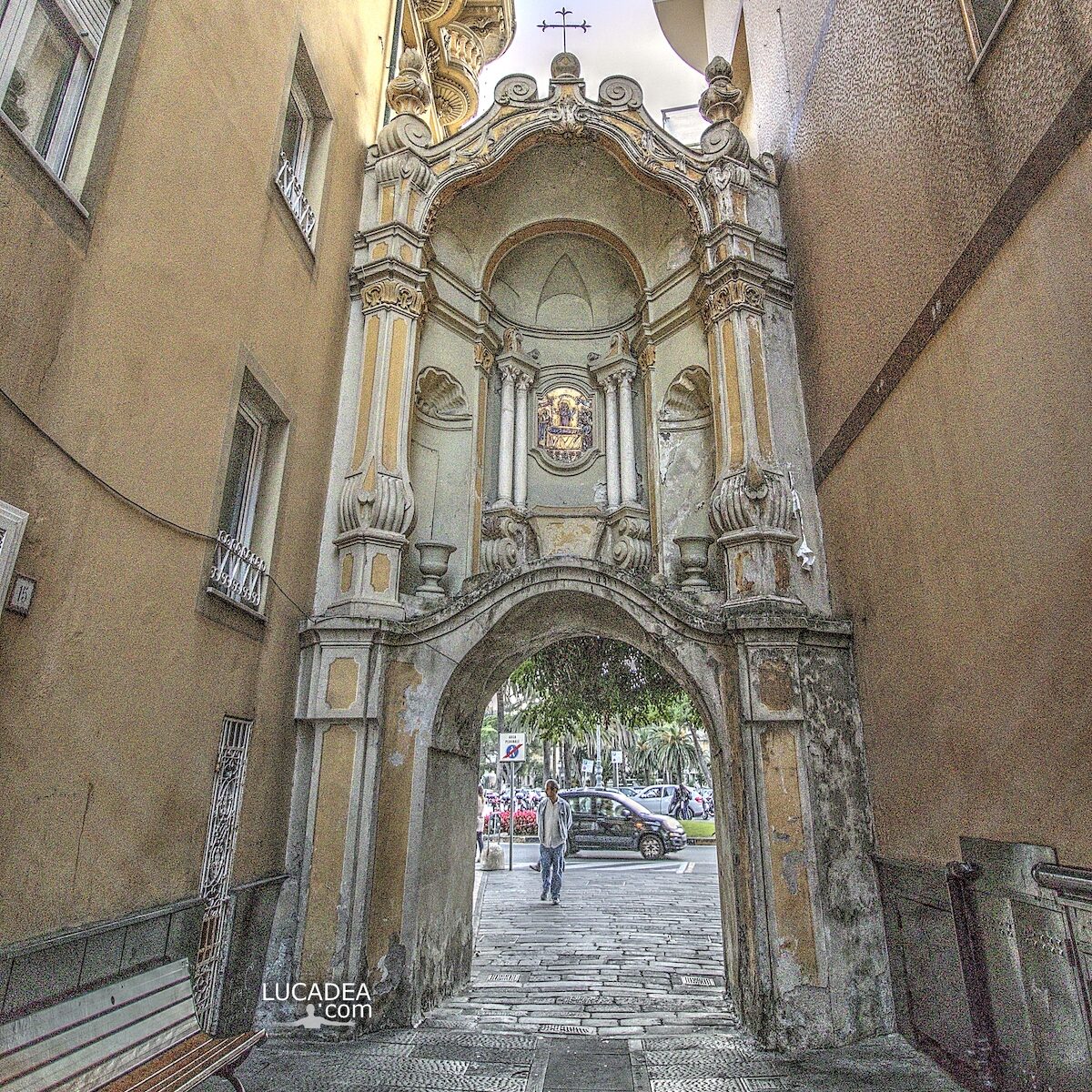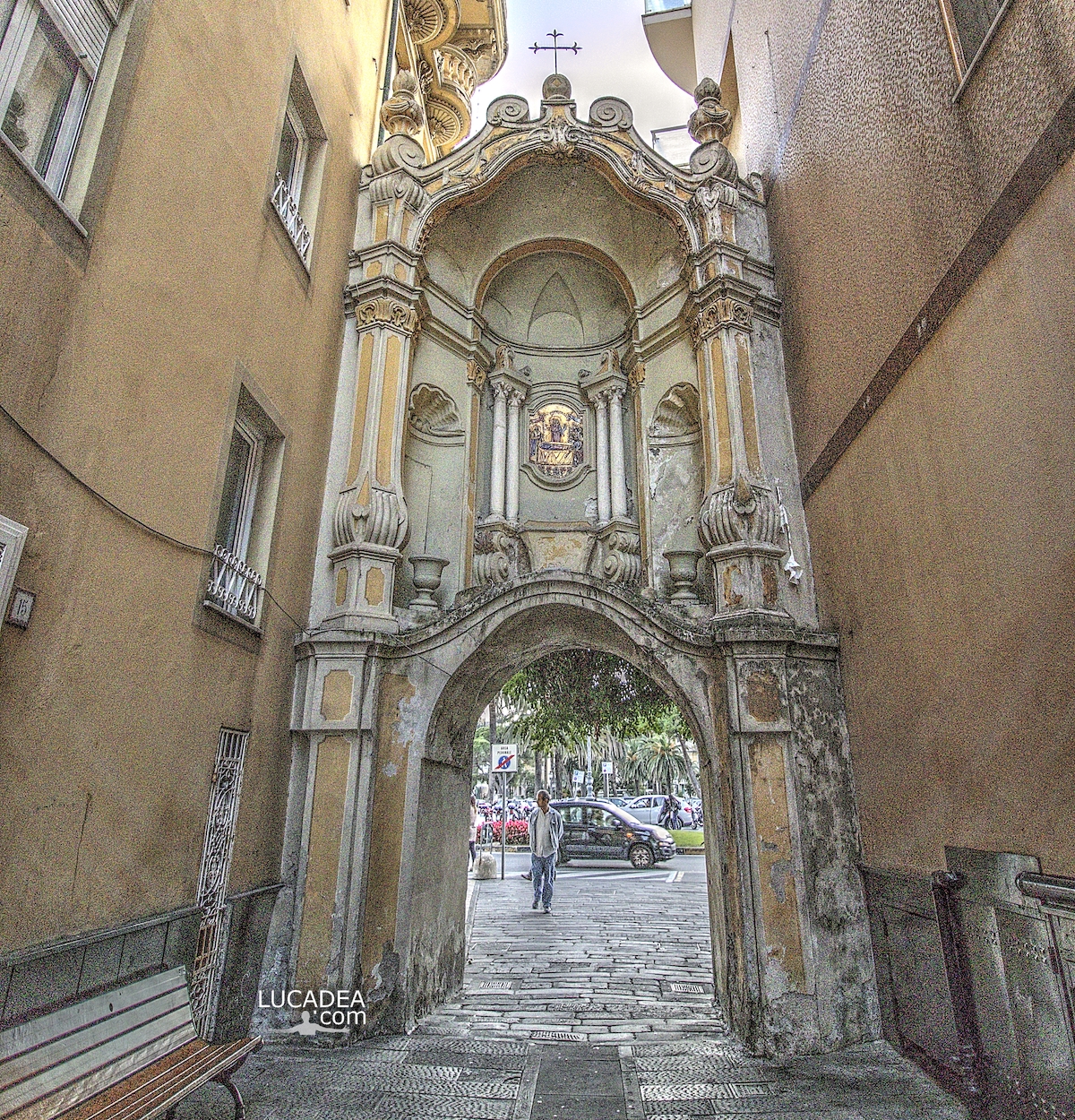The Gate of the Saline in Rapallo.
To tell the truth, I didn't even know there was a door in Rapallo and this one in the photo was a real surprise.
It is located at the end of the seafront promenade and you can walk along it to enter the alley.
I read on the town's website that the name comes from some salt mines that were in the area.
If you know something more or want to write me something about it add a comment or go to the bottom of the site to read what other visitors have written.
Photo taken with Canon EOS M100 and lens Canon EF-S 10-18.
I took several photos in the town of Rapallo, if you want to see them I am here:

It is the only survivor of the five gates of the ancient “walled village”, and owes its name to its proximity to the salt mines, of which the Genoese Doria family had a monopoly, which were active for many centuries in the flat area near the beach in the centre of the gulf.
Continue and learn more on Comune di Rapallo
The door of the Saline in Rapallo – La porte de la Saline à Rapallo – La puerta de la Salina en Rapallo – A porta do Saline em Rapallo – Die Tür der Saline in Rapallo – Cánh cửa của Saline ở Rapallo – 拉帕洛的盐水门 – ラパロの塩の扉
I refer you to the Rapallo tourist promotion website: hellorapallo.it. This is the official website of the town's municipality: comune.rapallo.ge.it.
If you are looking for a nice portal that talks about all of Liguria I invite you to visit the official website of the Region: lamialiguria.it.
If you want to learn more about the history of the city of Rapallo I recommend: Ieri a Rapallo and Rapallo. La storia nei secoli. Tesori e tradizioni della città e del suo territorio. If instead you want to have a guide that talks about Liguria and Tigullio I invite you to read the guide: Genova e il Tigullio by Lonely Planet.
To learn more about our privacy and cookies policy, go to the bottom of the site.
This page has had 155 views total.



Ciao,
La porta delle Saline è chiamata così, perché è situata nelle vicinanze delle Saline – oggi convertite nei giardini -, di cui anticamente la famiglia genovese dei Doria teneva il monopolio.
Oggi, divide il lungomare dalla città antica. Al centro del sovrastante altare barocco, custodisce una riproduzione dell’icona della Madonna di Montallegro, patrona della città.
La notizia più antica, riguardante le mura di Rapallo, si trova in un atto notarile del 26 Aprile 1221, stipulato in “punta muri Rapalli“. Fra gli altri documenti, c’è un decreto del 12 Febbraio 1629, della Repubblica di Genova, in cui Rapallo viene proclamata Borgo murato.
Le porte erano in tutto 5. Le altre porte, tutte scomparse, erano la Porta Occidentale – o degli Orti – distrutta nel 1874, la Porta Aquilonare – o di Sant’Antonio – abbattuta nel 1702, la Porta di Pozzarello o “del Molinello” diroccata nel 1810, che si trovava presso il torrente San Francesco, alla cui foce, sorgeva la Porta Orientale, demolita nel 1821 per aprire la strada statale.
Spero ti sia utile. Parte delle informazioni le ho trovate su http://www.iltigullio.com
Grazie mille!